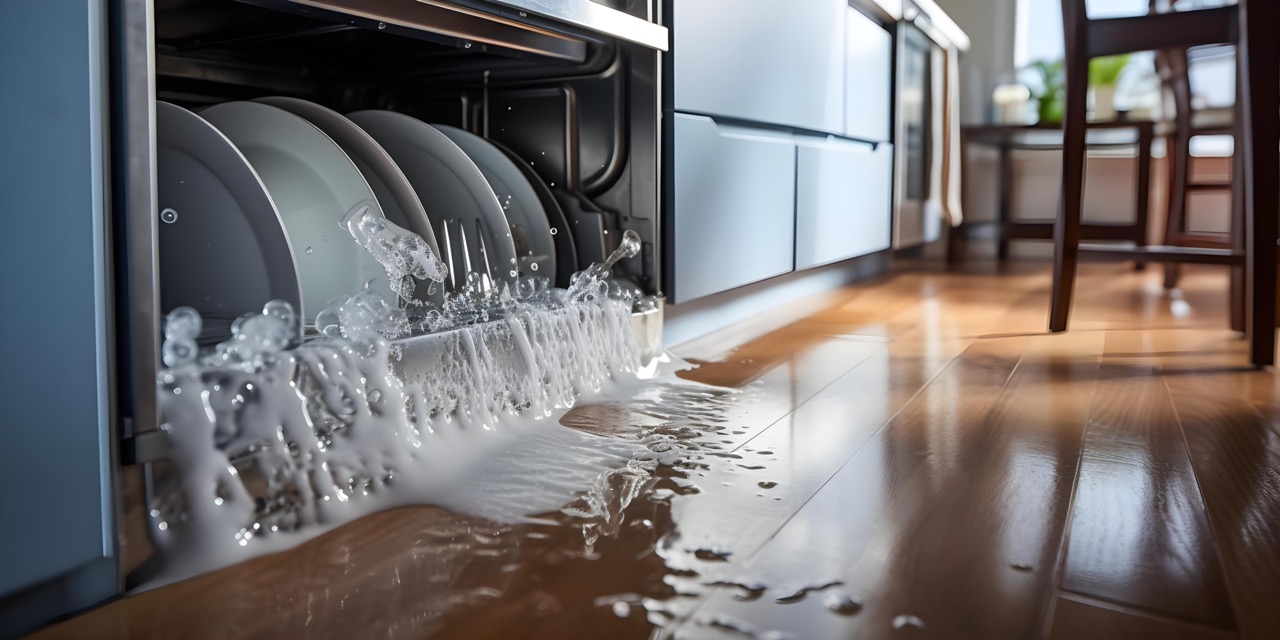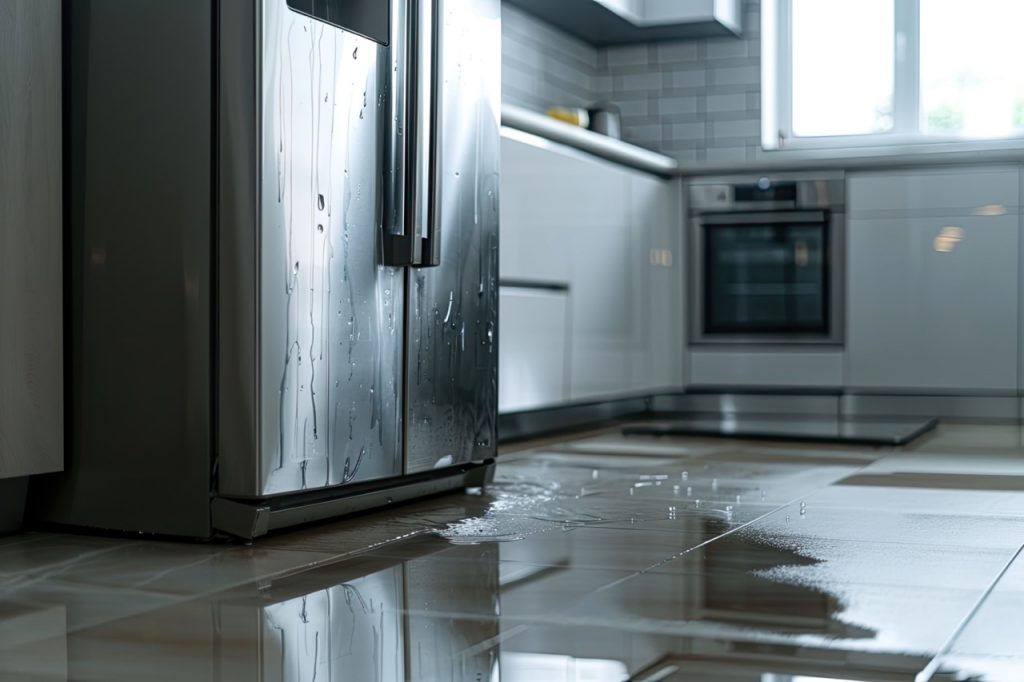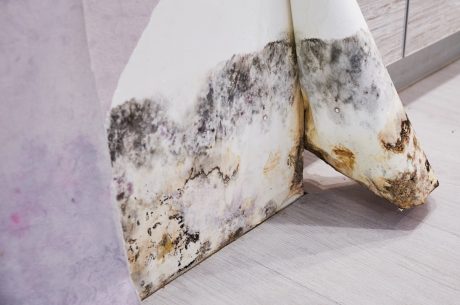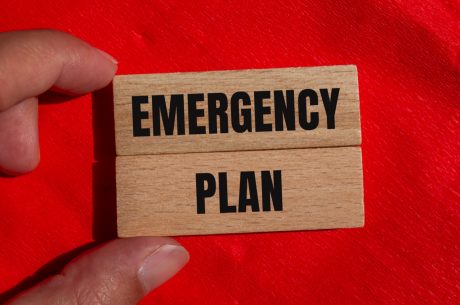Have you ever walked into your kitchen or laundry room only to find a puddle of water on the floor? It’s an all-too-common occurrence, yet one that can lead to significant damage if not addressed promptly. Appliance water leaks are a major cause of residential water damage, affecting countless homes every year. In this article, we’ll explore the causes, prevention, and solutions to this pervasive issue. Let’s dive in and save your home from unnecessary trouble!
Table of Contents
Introduction
Water leaks from household appliances can be as subtle as a drip or as obvious as a flood. Either way, they can cause extensive damage to your home if not dealt with quickly and effectively. Think of a water leak as a small crack in a dam; it might seem insignificant at first, but left unchecked, it can lead to catastrophic consequences. In this article, we’ll cover everything you need to know about appliance water leaks and how to protect your home from residential water damage.
Common Appliances That Leak

Washing Machines: Washing machines are a common source of water leaks. Issues with the hoses, seals, or the drum itself can lead to unwanted water on your laundry room floor.
Dishwashers: Dishwashers can leak from the door, the bottom, or due to a faulty hose connection. These leaks often go unnoticed because they typically occur during the wash cycle when the door is closed.


Water Heaters: Water heaters can leak due to tank corrosion, pressure issues, or faulty valves. A leaking water heater can cause extensive damage, especially if the leak goes undetected for a long time.
Refrigerators: Refrigerators with ice makers or water dispensers are prone to leaks. Water lines can become damaged or disconnected, leading to puddles that can damage flooring and cabinets.


Air Conditioners: Air conditioning units, especially central systems, can cause water damage if the condensate drain line is clogged or if there’s an issue with the unit’s installation.
Causes of Appliance Water Leaks
Understanding the root causes of water leaks can help in preventing them. Here are some common causes:
- Worn-out Hoses: Hoses in appliances like washing machines and dishwashers can wear out over time, leading to cracks and leaks.
- Faulty Seals: Seals around doors and other openings can degrade, allowing water to escape.
- Clogged Drains: Drains can become clogged with debris, causing water to back up and leak out of the appliance.
- Corrosion: Over time, parts of an appliance can corrode, weakening their structure and causing leaks.
- Improper Installation: Poor installation can lead to misaligned components and improper connections, resulting in leaks.
Signs of Water Leaks
Identifying water leaks early can save you from significant damage. Look out for these signs:
- Puddles or Standing Water: Obvious puddles around appliances are a clear sign of a leak.
- Unusual Sounds: If you hear water dripping or running when appliances are off, it might indicate a leak.
- Mold or Mildew: The presence of mold or mildew near appliances can indicate a hidden water leak.
- Increased Water Bills: A sudden spike in your water bill might suggest an unnoticed leak.
- Damp or Soft Floors: Floors that feel damp or soft near appliances can be a sign of water damage from a leak.
Preventing Appliance Water Leaks
- Regular Inspections: Perform regular inspections of hoses, seals, and connections to catch potential issues before they become major problems.
- Replace Old Hoses: Replace hoses every 3-5 years or sooner if you notice signs of wear and tear.
- Use Water Alarms: Water alarms can alert you to leaks before they cause significant damage. Place them near appliances to get early warnings.
- Maintain Appliances: Regular maintenance, such as cleaning filters and checking connections, can prevent many common causes of leaks.
Immediate Steps to Take When a Leak is Discovered
- Turn Off the Water Supply: Immediately turn off the water supply to the leaking appliance to prevent further damage.
- Disconnect the Appliance: Unplug the appliance to avoid electrical hazards.
- Clean Up the Water: Use towels, a mop, or a wet/dry vacuum to clean up the water as quickly as possible.
- Inspect for Damage: Check the surrounding area for signs of water damage and take note of any issues that need to be addressed.
Long-term Solutions for Leak Prevention
- Install a Leak Detection System: Leak detection systems can shut off the water supply when a leak is detected, preventing major damage.
- Upgrade to Better Hoses: Consider upgrading to stainless steel braided hoses, which are more durable than rubber hoses.
- Regular Professional Maintenance: Have a professional inspect and maintain your appliances annually to catch potential issues early.
Repairing Damaged Appliances
DIY Repairs
For minor issues, such as replacing a hose or a seal, you might be able to handle the repair yourself with some basic tools and guidance from the appliance manual.
Professional Repairs
For more complex problems, such as internal leaks or electrical issues, it’s best to call a professional.
Dealing with Residential Water Damage
- Assess the Damage: Carefully inspect the area for signs of water damage, including mold, mildew, and structural issues.
- Dry Out the Area: Use fans, dehumidifiers, and open windows to dry out the area as quickly as possible.
- Clean and Disinfect: Clean and disinfect the affected area to prevent mold and mildew growth.
- Repair or Replace Damaged Materials: Depending on the extent of the damage, you might need to repair or replace flooring, walls, or other affected materials.
Insurance and Water Damage
- Check Your Policy: Review your homeowner’s insurance policy to understand what types of water damage are covered.
- Document the Damage: Take photos and notes of the damage for insurance purposes.
- File a Claim: Contact your insurance company to file a claim and provide them with the necessary documentation.
Professional Help: When to Call
- Extensive Water Damage: If the water damage is extensive or involves structural issues, call PuroClean Property Savers.
- Mold or Mildew: If you notice mold or mildew, it’s important to get professional help to ensure proper removal and remediation.
- Electrical Issues: If the leak has affected electrical components, it’s crucial to have a professional handle the repairs to avoid safety hazards.
DIY vs Professional Repairs
- Cost Considerations: DIY repairs can save money, but they require time and effort. Professional repairs might be more expensive but are often quicker and come with a guarantee.
- Skill Level: Assess your own skill level before attempting repairs. Some issues might be beyond your capability and require professional expertise.
- Long-term Reliability: Professional repairs are more likely to be reliable and long-lasting, whereas DIY repairs might need to be redone if not done correctly.
Maintenance Tips for Homeowners
- Regular Inspections: Perform regular inspections of your appliances and their connections to catch potential issues early.
- Keep Areas Clean: Keep areas around appliances clean and free of debris to prevent clogs and other issues.
- Follow Manufacturer Instructions: Follow the manufacturer’s instructions for use and maintenance to keep your appliances in good working order.
Conclusion
Appliance water leaks are a common yet preventable cause of residential water damage. By understanding the causes, signs, and prevention methods, you can protect your home from unnecessary damage. Regular maintenance, timely repairs, and proactive measures can go a long way in keeping your appliances in good condition and your home safe from water-related issues. Remember, a small leak today can become a big problem tomorrow, so take action at the first sign of trouble.
PuroClean Property Savers provides emergency restoration services 24 hours a day, seven days a week. Our services include water damage, fire & smoke damage, mold remediation, biohazard cleanup, reconstruction and large-scale commercial property damage. We service Austin, Bastrop, Buda, Cedar Creek, Cedar Park, Del Valle, Dripping Springs, Elgin, Georgetown, Hutto, Kyle, Leander, Manor, Marble Falls, Pflugerville, Round Rock, Taylor, and Wimberley. Our average “on-site” time is 60 minutes, and we work directly with your local insurance provider.
Our role goes beyond just repairing properties; it’s also repairing lives. Visit us online at “PuroClean Property Savers.” Give us a call now at (512) 956-5700 or email us at [email protected] to schedule a visit. You can also find additional resources for emergency management, fire prevention planning, flash flood situations, and many other risks at the City of Austin Fire Department initiative #LetsGetRealATX.
Explore more helpful articles:



